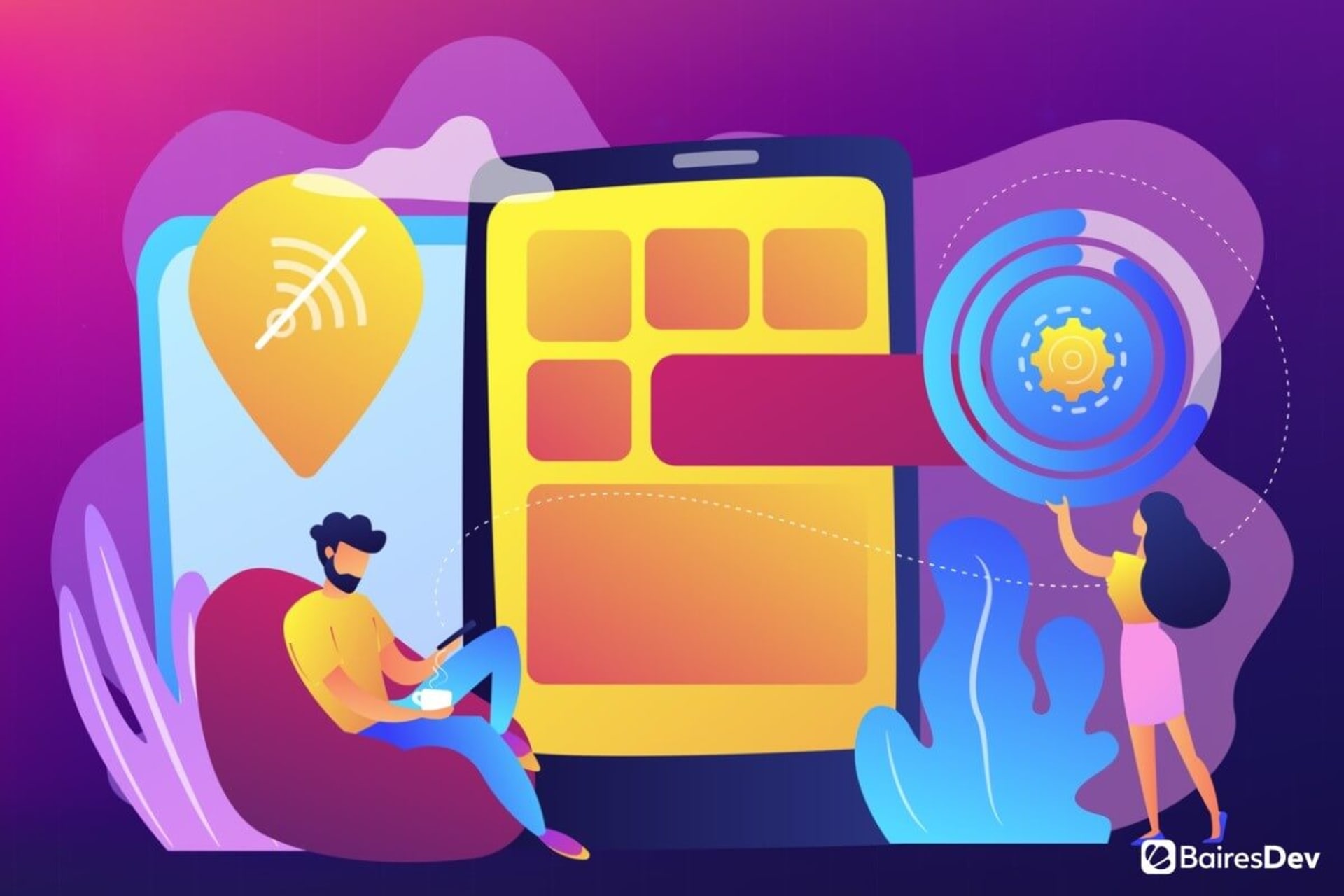- Home
- Technologies
- Progressive Web App
Progressive Web App Development Company
Our Progressive Web App development services already power dozens of active engagements. We typically land our teams within 2 weeks, so you can start shipping top quality software, fast.
500+ companies rely on our top 1% tech talent.
Progressive Web App Development Services We Provide
Custom PWA Development
Enjoy an app-like experience, offline capabilities, fast loading times, and responsiveness with progressive web applications.
From e-commerce platforms to healthcare apps, we build custom PWAs with HTML, CSS, and JavaScript. We also leverage tools like service workers, Web App Manifest, IndexedDB/WebSQL, and Cache API to deliver efficient and user-friendly solutions.
Progressive Web Design
Ensure your apps reach a wide audience. Create a universally accessible and responsive web design.
Progressive web design involves designing web apps that load quickly and function across devices, from smartphones to desktop computers. Leveraging responsive web design techniques with CSS media queries and flexible layouts, we craft a progressive web app design that delivers an accessible experience for all users.
App Migration to PWAs
Transform web or native mobile apps into PWAs. Offer an app-like experience within a web browser.
With migration planning and progressive web app technology like Lighthouse, Workbox, PWA Builder, and Bootstrap, our developers transition apps to PWAs. This leads to better engagement, responsiveness, and offline accessibility.
PWA Optimization
Optimizing PWA solutions leads to an improved user experience, stronger SEO performance, and enhanced offline capabilities.
We use service workers, lazing loading, responsive images, minifaction and compression, and other techniques to optimize progressive web app solutions. The result? Smoother, app-like interactions across devices and network conditions.
QA Testing for PWAs
Ensure your app is high-quality, responsive, and compatible across conditions and devices before it reaches end-users. QA testing is essential for delivering a reliable PWA.
Our QA engineers rigorously test your PWA, leveraging tools like Lighthouse, Puppeteer, Jest, and Selenium. We dive deep into your app, examining potential performance bottlenecks and compatibility issues, to ensure a functional and user-friendly experience.
Rolls Royce case study
Rolls Royce turned to BairesDev to develop an efficient, user-friendly mobile app. A two-week discovery process with the Rolls Royce product owner identified a comprehensive list of functionalities, data streams, and displays required to meet their clients’ expectations for a mobile SDS. Read the entire Rolls Royce case study.

Why Choose BairesDev for Progressive Web App Development

Top 1% of Tech Talent
Our rigorous vetting process ensures that we hire only the top 1% of progressive web app developers. We vet more than 1.5 million candidates every year, using online/written tests and HR/technical interviews to identify the best of the best.
Nearshore, Time zone-Aligned Talent
Our bilingual and nearshore developers mainly live and work in Latin America. That means their time zones are aligned with most businesses in the US. They can collaborate and communicate synchronously, which reduces the risk of misunderstandings and contributes to smoother workflows.
Diverse Range of Talent
Creating PWAs requires a multidisciplinary team. Our diverse range of talent, including web developers, UI/UX designers, and QA engineers, all contribute to building functional and user-friendly progressive web applications.
The Progressive Web App Ecosystem We Used in Previous Work
Core Technologies
Foundational building blocks for any web application, including Progressive Web Apps, emphasizing HTML, CSS, JavaScript, service workers, and web app manifests.
- HTML, CSS, JavaScript
- Service Workers
- Web App Manifest
Frameworks and Libraries for UI Development
Provide pre-written code for building user interfaces and structuring applications, facilitating the rapid development of robust and maintainable PWAs.
- React
- Angular
- Vue.js
- Preact
- Svelte
- Stencil
- Polymer
- Ionic
- Backbone.js
- Aurelia
Development and Optimization Tools
Assist in the creation, caching, and performance enhancement of PWAs, ensuring they are fast, reliable, and engaging for users.
- Workbox
- Lighthouse
- PWA Builder
- Webpack
- Parcel
- PWABuilder CLI
Testing and Debugging Tools
Offer functionalities to thoroughly test PWAs for various quality metrics and debug issues, ensuring applications are optimized, secure, and function as intended across all platforms.
- Google Chrome's DevTools
- Mozilla Firefox Developer Edition
Deployment and Hosting Services
Provide platforms for publishing PWAs to the web, offering features like global CDN, continuous deployment, and serverless functions to support scalable and high-performance web applications.
- Firebase
- Netlify
- Heroku
- Vercel
- Surge
- GitHub Pages
Other Tools and Libraries
Additional resources and utilities that support specific aspects of PWA development, such as routing, backend integration, or enhancing the overall architecture of web applications.
- React Router
- Create React App
- Angular Service Worker
- Vue CLI PWA plugin
- Hoodie
Key Things to Know About Progressive Web Apps
Tailored Solutions for Every PWA Project
Frequently Asked Questions
PWA development services are a specialized subset of web development services. Software development companies offer PWA design, development, testing, and optimization. A leading PWA development company will offer many services related to progressive web app delivery, such as custom development, performance optimization, and more.
PWAs and native apps primarily differ in operation, development, and distribution. A native app must be downloaded from an app store and is built with platform-specific languages. In contrast, PWAs can be accessed directly via a web URL. They can be "installed" on a device without a download from an app store. This leads to a more seamless update process.
PWAs differ from regular web apps primarily because they provide a native app-like experience and can function offline. PWAs also support features like background synching and push notifications and are designed to be responsive.
Yes, you can publish PWAs on the Google Play Store and the Apple App Store. A progressive web app developer can use Trusted Web Activity (TWA) to package the PWA as an Android application. This enables publication. The process is more involved for the Apple App Store. The developer must wrap the PWA in a native container, leveraging tools like Cordova or Capacitor prior to submission. This is because the App Store requires all apps to be submitted as native iOS apps.
How Businesses Can Overcome the Software Development Shortage
BairesDev Ranked as one of the Fastest-Growing Companies in the US by Inc. 5000

See how we can help.Schedule a Call










